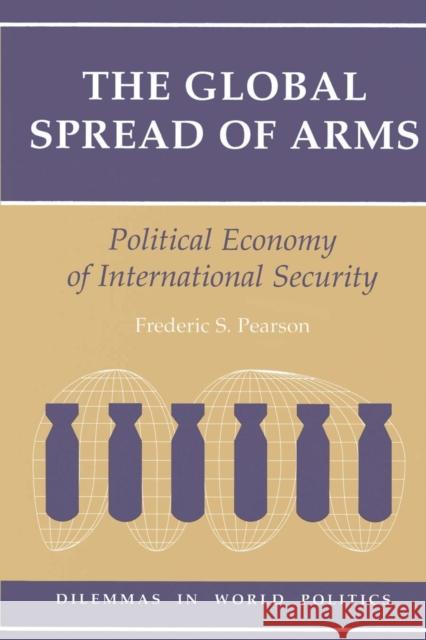The Global Spread Of Arms : Political Economy Of International Security » książka
The Global Spread Of Arms : Political Economy Of International Security
ISBN-13: 9780813315744 / Angielski / Miękka / 1994 / 176 str.
The Global Spread Of Arms : Political Economy Of International Security
ISBN-13: 9780813315744 / Angielski / Miękka / 1994 / 176 str.
(netto: 189,11 VAT: 5%)
Najniższa cena z 30 dni: 186,33 zł
ok. 16-18 dni roboczych.
Darmowa dostawa!
Today, despite the end of the cold war, more countries have more sophisticated weapons from more numerous suppliers than ever before. This is partly a product of continuing and growing conflictsespecially regional and interethnic onesbut it also reflects the political and economic difficulties of weaning public and private enterprise away from powerful and highly lucrative defense manufacturing and sales.In this compact yet comprehensive volume, Frederic Pearson surveys the broad terrain covered by the concept of the security dilemma and points out landmarks along the route proceeding from proliferation to economic interests, to potential conversion, to the future of defense production and marketing. Along the way we experience the lure of arms sales expositions and fairs and the quandary of deciding whether to arm victims of aggression. The author meticulously describes and documents the twin motives of welfare and security in the arms market: who buys weapons, who sells them, where they are produced, and how they areand are notused. Through a combination of data, anecdotes, illustrations, and narration accompanied by special feature boxes, we see how arms races have mounted historically and how they might be defused in this, the gathering postCold War order.From spears and axes to the radar-eluding stealth aircraft, The Global Spread of Arms charts the history of the arms dilemma and brings us up-to-date on myths and recent trends in weapons development internationally. Touching on issues ranging from multinational arms manufacturers to black and gray market consumers, from arms verification to arms autonomy, and from peace dividends to peace through strength, Pearson presents a balanced view of the policy debate about defense economies, collective security, and how to manage them.Governments of developed and developing countries alike talk about arms control but often fail to act in curtailing arms trade and transfers. Nowhere is the paradox of the sovereign right to arm more apparent than in current hot spots detailed by Pearson, including the Balkans, the former Soviet Union, Iraq, North Korea, and South Asia. We see an array of arms trends played out to devastating effect: sanctions, embargoes, multilateral trade and negotiations, smuggling, arms balancing, and, ultimately, proliferation and escalation cycles. Potential escape routes from weapons dilemmas also are offered in a full review of arms transfer controls.Students of international relations and international political economy, from peace studies to security studies, will join industry and government professionals as well as general readers in finding this primer indispensable to understanding the past and future global arsenal."











